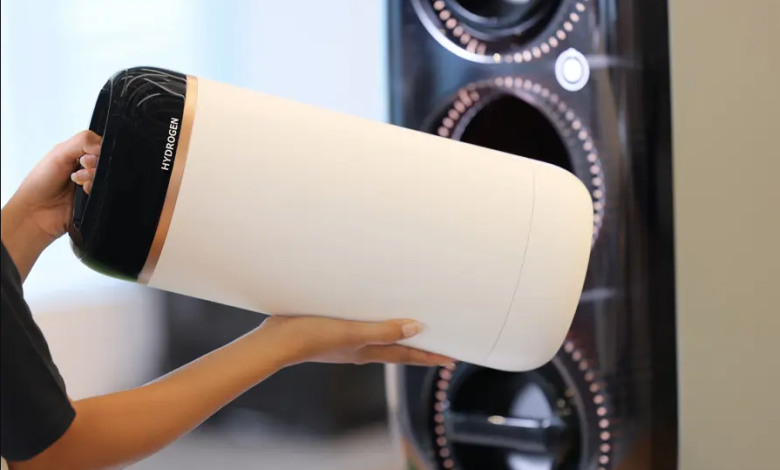Hydrogen generator with portable cartridges, Toyota is ready for the future

The smart city Woven City will be a test case
(Sustainabilityenvironment.com) – Toyota has an ambitious goal: to power entire cities with hydrogen generators. And to do so it needs technologies that can also facilitate its distribution and use. This is exactly the purpose of the new portable hydrogen cartridges created by the car manufacturer together with its subsidiary Woven Planet. The prototype already exists and will be tested in the coming months in a series of test beds, including the future Woven City. The objective of the project is to bring the carrier and the energy contained in it where people live and work without the need to build new transport infrastructure.
The portable hydrogen generator
The prototype is presented as a cylinder with an upper handle, 40 cm long and 18 cm in diameter, for weight (in the loaded state) of 5 kg. Each portable hydrogen generator cartridge should carry about 3.3 kWh of useful energy, obviously linked to the efficiency of the fuel cell used. The project is not yet complete. At full power, the units will be equipped with valves and safety systems that could increase their weight, but the flexibility of the design will remain the same. With the aim of making it easily usable and replaceable.
“Our goal is to help the H2 become commonplace by making this clean form of energy safe, useful and affordable,” Toyota explains in a press release. “By establishing a supply chain, we hope to facilitate the flow of larger volumes of hydrogen and power more applications. Woven City will explore and test a range of energy applications using portable hydrogen cartridges, including mobility, domestic uses and new uses yet to be imagined. Together with inventors and those living in and around Woven City, we will continue to promote fuel cell transportation by constantly developing more practical applications for cartridges. In future demonstrations of Woven City, we will improve the technology, making it increasingly easy to use and improving its energy density”.
The prototype premiered at the Super Taikyu Series 2022 Round 2 at Fuji speedway.





